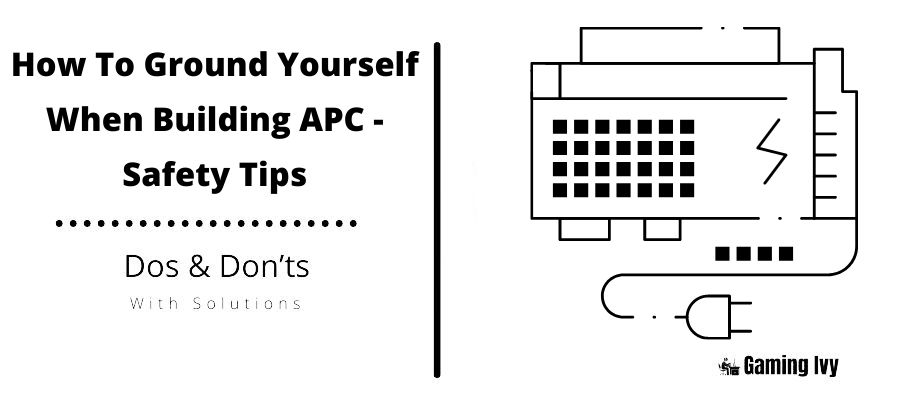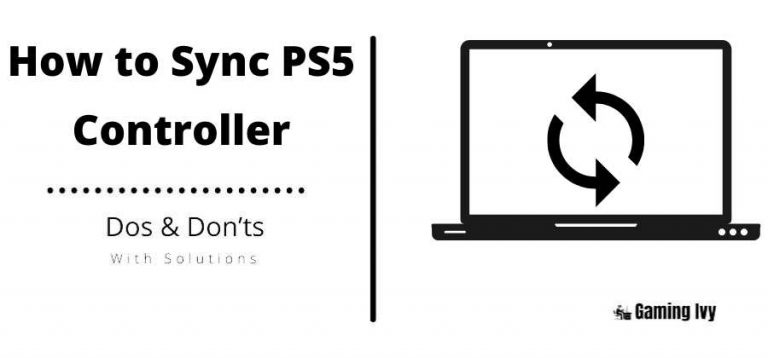How To Ground Yourself When Building APC -Safety Tips
In recent years, most users have opted to build their own computers to guarantee that they match their individual requirements. This is an excellent idea, and if you know what you’re doing and do it correctly, it will work well for you.
Because a computer uses electricity, you must be cautious when connecting it to avoid frying the components.
Grounding yourself is one of the safeguards to avoid being shocked by static electricity. Let’s have a look at how you can implement this:
Table of Contents
How To Ground Yourself When Building A PC?
When building a PC, it’s critical to keep your feet on the ground because it’ll protect you from a potentially terrible ordeal. There are various techniques to ground yourself, and we’ll go through each one in-depth; let’s get started.
The power outlet can be used to ground the computer. Turn off any other PC’s power supply unit if you have one. This ensures that no current enters your computer, keeping you safe from the main current. Plug the Power Supply Unit into a functional power outlet to remove the majority of the static charge from your computer. Because metals can transmit static charges, touch a metallic portion of your PC to earth the rest of it and yourself. You must be standing on solid ground, such as wood, tile, or concrete, rather than a carpet, which will not earth you.
Avoid
To avoid static charge build-up, keep one hand on the PSU while working or touch it every few seconds.
You can also ground yourself by wearing an anti-static wrist wrap. The main goal of Earthing yourself is to send any static energy from your computer down to the ground, preventing it from frying your computer.
Because it is elastic and fastened to your wrist, an anti-static wrist band makes this easy.
You only need to connect it to a metallic portion of the power supply, and you can work without fear of static electricity.
This is more convenient because you won’t have to worry about accidentally touching the power supply while working.
It also implies that because the cable is always connected, there will be no static charge build-up. If you have a carpet, this is the greatest option.
When working on the computer, avoid wearing socks or cotton gloves. Socks generate a lot of static energy when they brush against other surfaces, therefore they won’t help ground your computer’s static charge.
In the same sense, don’t work on your computer on a carpet because it generates a lot of static electricity when your feet or hands rub against it. Close touch may cause damage to your computer’s components, so it’s best to prevent it.
To ground yourselves, use an anti-static floor mat. This is a carpet that is precisely created to transfer any electricity in your body to the ground, preventing any build-up in you.
What Is Earthing?
Earthing is critical, and every electrician or computer expert will tell you about it repeatedly.
But what exactly is earthing? We need to comprehend it to understand why it is vital, so let’s get started.
Getting yourself connected to the earth is known as earthing. Any sort of electric current strives to return to the earth through any media available. Friction with adjacent objects causes most of the static energy in PCs to build up.
To earth a computer, this involves removing the static charge from it and transferring it to the ground, where it can’t cause any harm.
This safeguards the motherboard, as well as the rest of the computer’s components and the user. If a build-up occurs, the charge may reach a deadly level for the components.
When you ground yourself. The static charge in your body is transferred to the earth, keeping you and whatever you touch safe.
Because electric current seeks the path of least resistance. If you are not earthed, you risk damaging sensitive electronic components.
After that, you must stand on a material that will assist you in discharging the charge. Surfaces like carpets or socks, like wood or concrete, will only generate more static electricity, which is harmful to you and your electronics.
How To Protect Components From Static Electricity
So you’ve invested in a brand-new graphics card with extremely high specifications. However, if you rub your feet on the carpet and touch the graphics card. It will be permanently ruined. What exactly is your problem? It’s most likely static electricity.
How do you protect delicate equipment from static electricity if you can’t keep frying your devices? To address the question, let us delve deeper into the details.
Foam or bubble wrap is frequently used as the first protective layer. The goal is to keep any substantial charges out while also protecting the package from physical damage. When you purchase this wrap, it will include all of the necessary components.
The ESD bag, also known as an anti-static bag, is the next layer of safety. The outer surface of this bag is mostly made of conductive material. Electrostatic charges can be discharged through this conductor before they reach the components.
When not in use, you should put any equipment such as hard drives, RAM sticks, or graphics cards inside the anti-static bag. Because the devices’ surfaces are conductive, don’t place them on top of the paper.
Also, avoid flipping the bag inside out because the interior may become charged. Handle the equipment by the edges and avoid touching the PCB. Which is more easily damaged. Before dealing with any device, be sure you ground yourself.
Conclusion
It’s crucial to keep yourself grounded while working with computer components. You can use a PSU that is connected to the mains but is turned off to the ground properly. This method is effective, but it necessitates constant contact with the power supply.
Using an anti-static wrist band is a more handy option. It comes with an alligator clip so you can attach it to your power supply or any other surface that will discharge you and allow you to move about freely while being earthed.
Building your own computer can be a rewarding process with various benefits. You will only get the benefits if you install all of the necessary components and configure them properly. The job will go much more smoothly if you have the correct tools.
If you learned a new thing about How To Ground Yourself When Building APC? today, then please don’t forget to share this article with others. If you have any questions or suggestions for us, please feel free to write them in the comment section down below.
Thanks







